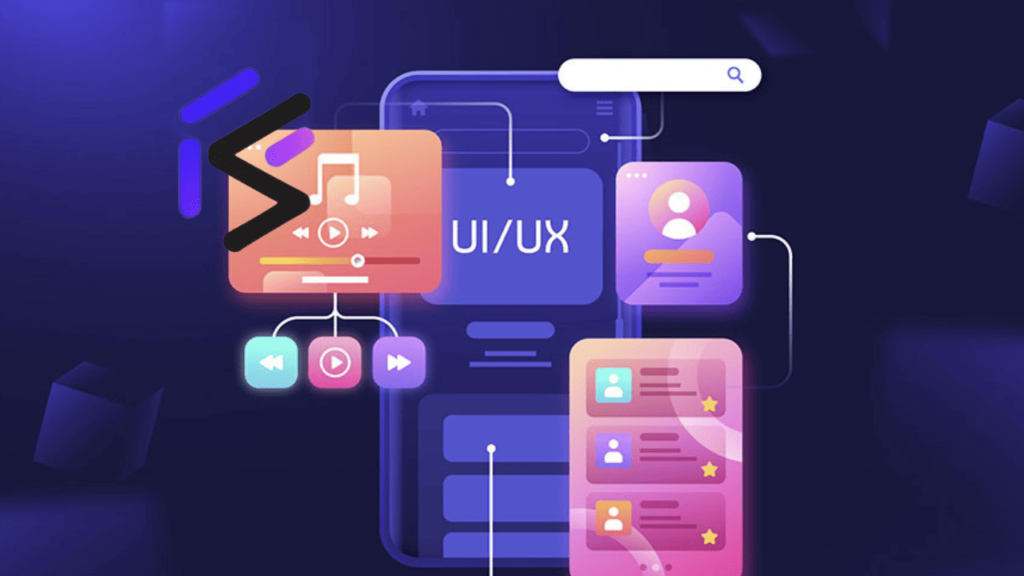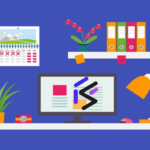Introduction Of UX Design Tests
In today’s fast-paced digital world, those companies that can make products which the consumers love are the ones that will remain. This is where we would be able to design emphatically about the users’ problems or their pains. User-focused design looks through understanding the requirements and peculiarities of users to deliver options that are not only satisfactory but also provide exceeding users’ expectations.
At the heart of user-centric design lie the UX design test – invaluable tool that helps designers validate their assumptions, identify pain points, and refine the user experience. Whether it’s assessing usability, evaluating navigation flows, or gauging overall satisfaction, UX design tests play a crucial role in ensuring that products and services resonate with their intended audience.
This article will examine the role covered by UX design testing in the framework promoting the concept of user-centricity. There will be a talk which will cover different sort of tests: usability testing and A/B testing and it will focus on the questions. How these tests participate in the iterative design process. Moreover, we’ll shine a spotlight on two essential aspects. UX design tests: skill tests and cognitive tests, which are mandatory for assessing the quality of design and how effectively user experience is produce.
Understanding UX Design Tests
UX design tests work as a compass we can orient ourselves by when creating a complex product. These exams are generally group into categories according to the specific features they seek to proffer and explore.
Usability evaluation, for example, will engage real users to interact with the product. The designers can see how they are handling the product to make identifications of areas for improvement. A/B trials or split testing are options that empower the designers to put forward various versions. The product or features under similar user environments so as to find out which one is highly accept.
Prototyping provides an opportunity for designers to acquire feedback on initial concepts. Therefore, they do not have to waste substantial effort and costs on designs that do not ultimately meet the standards. They allow designers to tap into so many dimensions of user behavior, preferences. Touchpoints and help them to apply a lot of professional experience and knowledge from these sources.
But it’s not just about evaluating the user experience; it’s also about evaluating the skills and critical thinking of designers themselves. Skills test assesses designers’ technical proficiency and expertise, while critical thinking test gauges their ability to anticipate user needs and make strategic design decisions.
Importance of User-Centricity
Being user-centric is not just a forehead fashion statement; people-centricity is the bulwark of successful product design. As long as the users’ interests go first, businesses will be able to build experiences superior to the rest, that therefore guarantee an active customer base, satisfaction, and ultimately, success.
The designers can’t afford to ignore user-centric design when it involves every aspect of a product ranging from its functioning to the visual appeal; instead. They should make the product suitable for the category that it is meant for. This approach has led to the increased level of users’ satisfaction. As well as to the creation of a positive brand image and loyal and enthusiastic support.
Besides, user oriented design also is one of the reasons lead to business success. By using the products which are solving actual user problems and discomforts, the businesses can become stiffer in the market building growth. By being user focus, the brand design is indeed followed by high levels of engagement and user retention. Which is without any doubt the direct and indirect key to success and profit.
Conducting Effective UX Design Tests
Conducting the UX design tests just as it is in conducting a symphony operation necessitates a malleable approach that entails sufficient advance planning, coordination, and attentiveness throughout the process. The trial to actualize lab tests starts by formulating goals. Why are you establishing this Applied Humanities programme? Whether it’s enhancing usability, increasing conversion rate, or arranging the interface, the testing purposes will be a framework which overall testing process is based on.
The next thing that is crucial is to choose of methods that will do your tasks. Usability tests, A/B tests, and prototype tests serve to obtain different valuable boosts as to the experience of the users, so the methodologies should be chosen. Which match your goals as well as target audience. Also, the issue that the budget, timeline, and resources will have to be taken into account when the testing methodologies will be chosen.
This is where one has to decide on the objectives and the methodologies. So, the next step is to look for informed participants. Locate these different types of potential users some of whom may be your target audience and are able to contribute useful info. The mission here is to collate findings that will aid in guiding the design process. As well as boosting the user experience later on.
There is the possibility that it may be a phase when adaptation and iteration will be required.. Often, the unthought-of outputs are the one found, and appropriate adjustments should always be made on the basis of the input received to meet the objectives of consumers. Ultimately, subject your findings to detailed analysis and derive without delay applicable insights that will give rise to design changes. Through this you, designers will be able to know the common mistakes which sometimes make testing. UX design ineffective and consequently impactful in the creation of user-centric experiences.
Analyzing Test Results
Interpreting test outputs is equal to solving a puzzle because it implies great attention and unusual ocularity skills for them to be successfully observe. The following step is performing the tests of the UX design and collect the necessary data for future reference and analysis. In the analysis and digesting of the collected data, you will arrive at meaningful insights technicals mind.
First, put the data into orderliness as there is the need to be organize. Information can be present through tables, charts or qualitative feedback, by structuring the data. It is easier to recognize patterns and trends. Seek for the consistent patterns of problems and solutions showing within different testing.
Further on in the process, make à list of all the findings sorted according to the importance of them to the user. Not every problem has the same value thus. When evaluating those that will need attention most, one need to look at those that are serious. Enough to affect user satisfaction and engagement.
Let the research findings be evaluate and select, then the alternative solutions and design prototypes are generate. Cooperate with the cross-functional teams with which you work (e.g. with developers, product managers, and stakeholders) to investigate possible solutions and pick the best one out of them.
Years fally like this, never forgetting the final step – iterate. It is the manner of the design execution which is constantly iterative; as such, results analysis should continuously be used to lead to a better team. After this is done, concerning changes, and also follow-up tests, if require, may be Carrie out to observe users’ experience.
Incorporating Feedback into Design Iterations
Listening to users, taking all the feedback into account and implementing them into design versions is the heart and soul of user-focused design. After test results arrive and a meeting with the result analysis is prepare, the next essential step is to transform. The gain insights into actions which can work for enhancements. Moreover, the main goal of this process is not only to adjust the flow of the user for the sake of it through listening to the user needs. Understanding what s/he wants, and moving towards their experience end goals this can be refine.
At first, put the feedback that influences the output in priority and generalize those types that are easy to implement. Some issues may demand spending for down the action, others, for later iterations of the product. Work with the stakeholders and cross-functional groups in order to determine the best procedures to be follow for planning and implementation accordingly.
After that, come up with a possible solution and sketch alternative designs. This is the area where we need to set our imagination and our critical thinking skills to work. Think certainly beyond the usual and see how you can come up with unique problems fixers and the whole experience.
Now actions are require to put the solutions inforce. Apply the needed mods, whether it boils down to the user interface fixing, the user flows enhancing, or the content performing cutting edge. Of course, it’s vital. That the changes were prove correct that the improvements did the desire way to the user experience.
Last but not the least, you should always remember to repeat. To make it a successful one, user-center design has to be a never-ending process; and the people’s opinions should be use in the course of design iterations. Be mindful of user feedback after the evaluation and adapt to users’ presentations. By adopting an iterative process with continuous feedback loop the designers can consistently. Enhance their creation to match ever-changing tastes and requirements of its users.
Case Studies: Real-World Applications
UX design theory confronts this reality and it does so in a way by application of case studies and real-life applications. These examples present compelling representations. How UX testing can be immensely impactful in regards to the potential to lead to product success and users’ satisfaction.
Assume a mobile bank app had a low level of the engagement of its users. Through usability testing and rider’s input analysis the design team noticed that there was a significant level of confusion concerning the app’s navigation. Using these data, they redesigned the navigation system again. Which resulted in remarkable improvement of the level and satisfaction of the existing customers.
The other demonstration is of an e-commerce site that is having high cart reject rates. Having two versions A and B of the checkout processes for the design team. A problem was that payment phase needs improvement. Through the elimination of payment process steps and making it as intuitive as possible, they managed the cart abandonment rate decrease and saw an increase in conversion rate.
In these cases, recurring customer perspectives show how previous UX design tests directly cause user experience modifications. With using obtained test result (as from testing methodologies such as skills test or critical thinking test). It designers are able to identify existing problems such as complications with workflows. As a result, designers are able to fix these issues and design products that are fill with delighting users and are helping in achieving business success.
Conclusion
The digital design realm is becoming an unstoppable train. Without users’ orientation that’s not only a goal but a requirement for the success. During this course, we have observed the most dispensable part of UX design testing that is the crucial maneuver for the attainment. From understanding the various testing methodologies to analyzing results and incorporating feedback, one thing remains clear. User-centric design is an interactive process that takes into account multiple feedback and then shifts to the next level or layer.
Designers would need to take user requirements and preferences into consideration in order to produce products and services that would be relevant to users’ needs and interests. Consequently, feedback gathered and analyzed from UX testing would help in achieving this goal. Whether it is usability testing or the A/B test. Skills test or critical thinking test all tools are important for the designer of UX when they are exploring the user experience.
With this journey coming to an end, we will keep in mind that the user-centricity is by not only a tick box to be checked and a mindset to be taken up. Through involving users in the design process and by constantly evaluating and adjusting the solutions according to the users’ feedback. As a result, designers will be able to create services and products that not merely meet but exceed the expectations.


